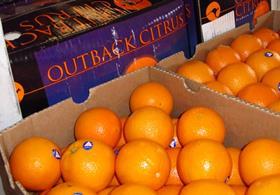
Steady growth in China and an increased footprint in South East Asia will continue to propel Australian citrus exports over the next decade, according to international trade expert Laurie Smith.
Despite repeated headlines about the slowing of the Chinese economy, Smith said any sort of growth in the People’s Republic is a positive sign for Australian exporters.
“Growth is now only half of what it averaged during China’s boom years in the 2000s, but after 35 years of reform and fast growth, China is a now a very big economy,” Smith explained. “Even slower growth is a bigger deal today in terms of added size and increased consumer demand than faster growth - off a smaller base - was just 5 or 10 years ago.”
Smith, who was based in Asia (Guangzhou, Beijing, Taipei and Shanghai) for 18 years prior to returning to Sydney in 2011, said a rise in the consumption of premium products by a growing Chinese middle class was a major milestone in the country’s economic development.
While it’s difficult for Australian producers to compete with rival export nations on price, Smith said product quality and branding are driving purchases from increasingly affluent Chinese consumers.
“Attitudes towards quality are also changing as consumers become more affluent. A 2014 survey found that product quality equalled product price as one of the two most important purchasing factors for 2/3 of online buyers,” he noted.
The Philippines, home to a large demographic of young, educated consumers, with a growing appetite for premium imported products, is also shaping as an important market for Australian citrus.
Austrade business development manager, Vanessa Perez, suggested the growing Filipino middle class has driven the economic expansion. By 2030, around 80 per cent of the Filipino population is expected to belong to the middle class, while income per capita will rise from US$2800 to US$8500 in 2024.
There are an estimated 18-20m Filipino consumers who already have an appetite for quality and premium imported products, according to the July 2015 US Gain Report, with the market remaining a net importer of key agricultural commodities, including citrus.
“China and the US combined make up 80 per cent of the Philippines imported fruit trade, although Australian share is growing,” Perez said.



